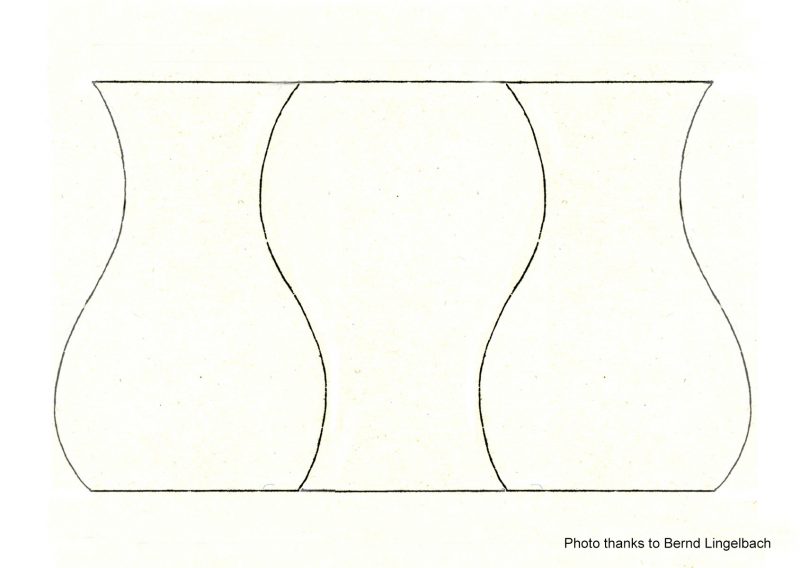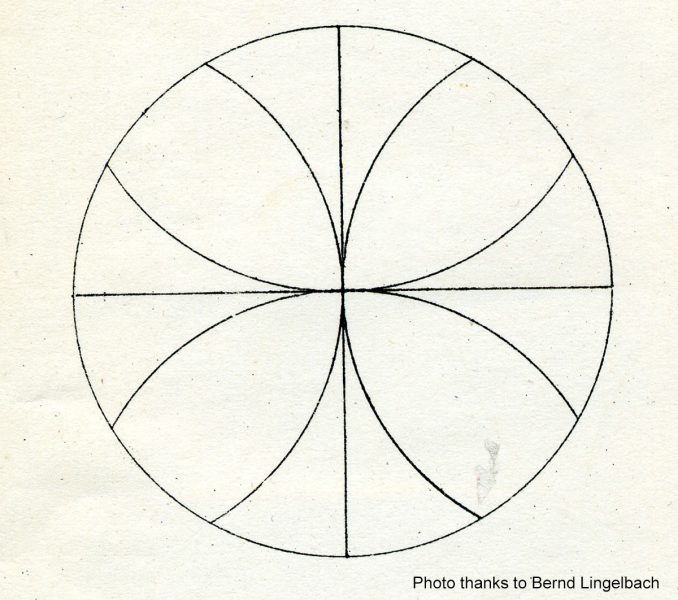
This may not look a dramatic illusion by contemporary standards: the top and bottom lines are each divided into three equal segments, but the middle segment appears longer than the flanking segments in the top line, and vice versa below. Yet it’s a really remarkable figure. It’s one of sixteen in a pioneering paper of 1855, the first ever study of illusions of this geometric kind. Even more remarkably, as an illusion it remains to this day wholly unexplained, as baffling as it is simple.
The paper was by a Frankfurt schoolmaster called Johann Joseph Oppel. In it he named his illusions as geometric-optical illusions, to distinguish them from illusions observed in the natural environment such as the Moon illusion. Oppel seems to have observed the misjudgments that these new geometric illusions give rise to in math lessons, when his pupils were drawing or judging figures on the blackboard. I suspect he was probably an unforgettable but demanding teacher. He was for sure a real one-off – a tirelessly curious observer, leading the way into acoustical and language research, as well as geometric illusions, with fearless independence.
Four of us, Nicholas Wade, Dejan Todorovic, Bernd Lingelbach, and I, have just collaborated on the first ever translation of Oppel’s 1855 paper into English, with a commentary, freely available in the online journal iPerception.

Remarkably, we are very little nearer to an agreed explanation of the effects Oppel reported than he was, 162 years ago! Any of them! Oppel’s figures relate to illusions that have become famous in later versions, such as the horizontal vertical illusion, the Zöllner illusion and the Oppel-Kundt illusion. The figure at the head of this post, and the one at the head of this paragraph, seem to be a versions of the Müller-Lyer illusion. They show outlines that are objectively equally divided, but into segments that appear unequal. There’s now a huge literature on all these illusions, without a consensus on what gives rise to any of them. I can’t think of another area of science, which has proved so resistant to real progress, or in which the papers from over a century ago are still well worth reading.
If you’d like more detail on Oppel, you’ll find it in three chapters in the just-published Oxford Compendium of Visual Illusions: one by Nicholas Wade, giving the early history history of illusions, including Oppel’s pioneering contribution; another by Dejan Todorovic, offering a detailed technical discussion of all Oppel’s figures and some the later versions of them; and a third by Jiri Wackermann, on the Oppel-Kundt illusion.
The publication of the new Oxford Compendium of Visual Illusions, by the way, is another landmark event in the study of illusions. If you’re a student, just check the price before you buy it! It’s pretty costly. But it’s a remarkable achievement, and I’ll be posting on it in more detail shortly.
